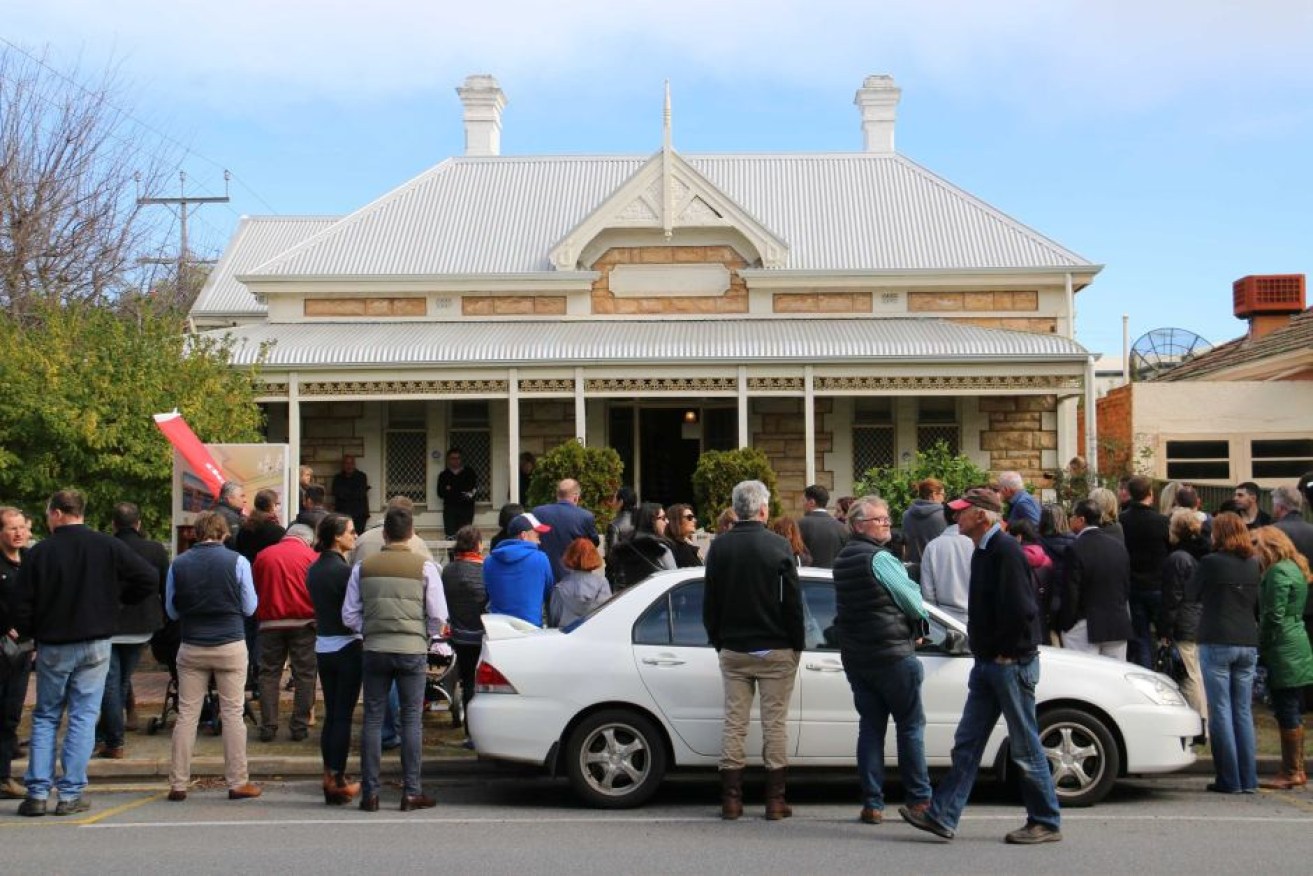Moves to cool red-hot house prices unlikely to do much for young buyers


Booming house prices might not be reined in much by regulatory action. Photo: ABC
Millions of Australians have spent much of the past 18 months in lockdown, but you wouldn’t know it from looking at the property market.
Average home prices have risen 17.6 per cent over the nine months to September and 20.3 per cent over the past 12 months according to CoreLogic. Regional prices are even stronger, up 23.1 per cent over 12 months.
The annual growth rate is now tracking at the fastest pace since the year ending June 1989, CoreLogic says.
“Something has to be done if we don’t want to rule out a generation of Australians from owning their own homes,” said Labor shadow assistant treasurer Stephen Jones.
The government is hearing those voices and is about to act. A meeting of Australia’s financial regulators on Tuesday raised the flag on house price concerns and foreshadowed action by APRA in the next two months.
That means we can expect what are called macroprudential measures – a tightening of loan-to-valuation ratios (LVRs). That is the ratio of loan to deposit banks can use to finance a property.
Will it work?
The question for would-be home buyers is how much will that affect house prices. Well, last time it was tried in the middle of last decade, restrictions of LVRs to 80 per cent along with moves against investor loans, saw home prices fall perhaps 10 per cent.
But that was a time also when foreign investors were restricted from the market. Restricting foreign investors can only happen once so its effects on dampening house prices can’t be repeated.
Observers think that new regulatory moves won’t deliver as much as people want in terms of restraining the house price boom.
Scott Keck, principal of property valuers Charter Keck Cramer, said the market will cool soon anyway. “That’s because house values as a per centage of net disposable income would just be getting unaffordable anyway, and I’ve started sensing that in the marketplace over the last month.”
He also thinks that macroprudential rules in the current environment would not reach their target. First home buyers on the city fringes are the ones finding it more difficult to get into the market “but house and land packages there have not seen price moves as large as in established areas in the inner city,” Mr Keck said.
Restrictions on LVRs would hit them, but not people in areas where the market is very hot.
“Anyone who has got $2 million in cash or equities to move into a $3 million house is not going to be impacted by macroprudential measures,” Mr Kreck said.
More is needed
Macroprudential measures are “necessary but not sufficient”, said Emma Dawson, executive director at think tank Per Capita. That is because they won’t hit the investors who push the market up over the long term.
“If you look at investors who are leveraging 95 per cent equity on existing properties and putting down 5 per cent on another property, that’s what needs to be cracked down upon,” Ms Dawson said.
The big challenge, Ms Dawson believes is “the fiscal settings that are pulling against affordable housing.” Those, she says, are restrictions on negative gearing and boosting the capital gains tax.
But they are off the political agenda in the wake of Labor’s loss at the last election when it ran on those policies. Chris Richardson, partner with Deloitte Access Economics, adds to that list including housing values at least partly in the age pension means test.
But he says all up such measures would not deliver the benefits advocates call for. “All up it would probably mean a difference of 4 or 5 per cent in house prices,” Dr Richardson said.
The real cost of housing
There is also a question mark on just how unaffordable housing is becoming. Per Capita research says rising prices mean the generation buying houses in 1970 were spending 11.2 per cent of post-tax household income on housing.
Buyers of the 1985 generation would have seen that rise to 19.5 per cent, and buyers in 2000 would have been stuck with a massive 25.5 per cent impost on household income.
However, since that date interest rates have fallen dramatically, with Dr Richardson noting home loan servicing costs have come down since peaking at 16.4 per cent in 2010, as the table above shows. The difference between the two outcomes is that Dr Richardson’s figures include income and repayment sets across all age groups while Per Capita’s figures look at the situation for different age groups.
“Housing affordability is better today than the average of the last couple of decades,” Dr Richardson said. “There has been a great rise in the price you pay, but as interest rates have fallen the cost to pay off the loan has reduced.”
But for many people struggling on low pay that is not the case and people borrowing heavily in recent years have not seen their mortgage commitments fall in the first few years of their loan life. That’s because low inflation and low wage growth has meant their relative debt burden has not declined as much as in previous generations.








